Photo
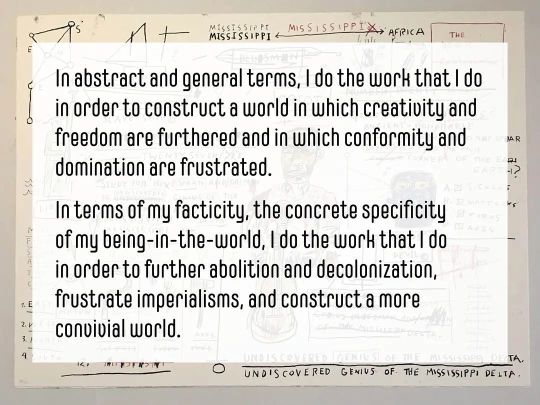
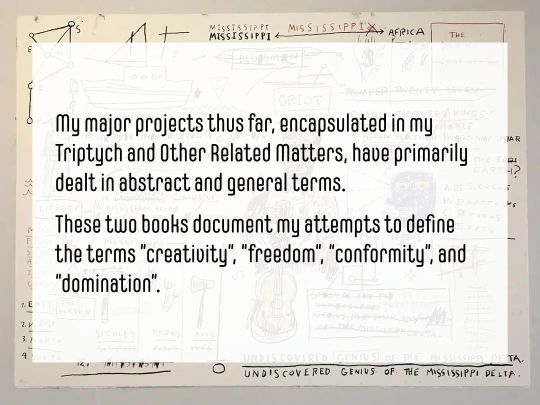


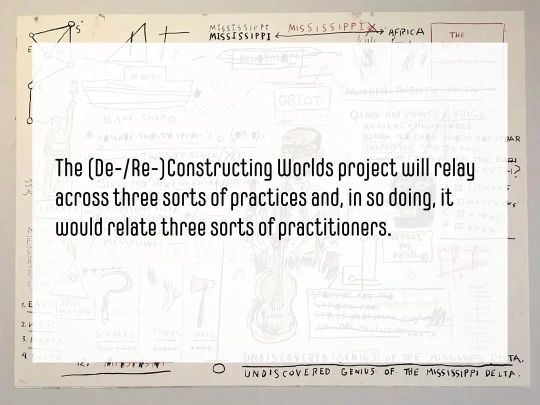





I always tend to conceive of my next project in the afterglow of my last project. It was while finishing up Other Related Matters that wrote my Four Essays on Reparations, and it was while finishing up my Four Essays that I started conceiving of my new project. This is because each succeeding project is an attempt to develop potentials nascent in the preceding project.
My new project is an attempt to develop the relationships, skills, and tools that I would need to do what I proposed doing in my Four Essays. The project hopes be more practical than theoretical. Indeed, borrowing from Joseph Beuys, it hopes to be a sort of "social sculpture".
You are invited to participate! You can learn more about the new project here.
1 note
·
View note
Photo
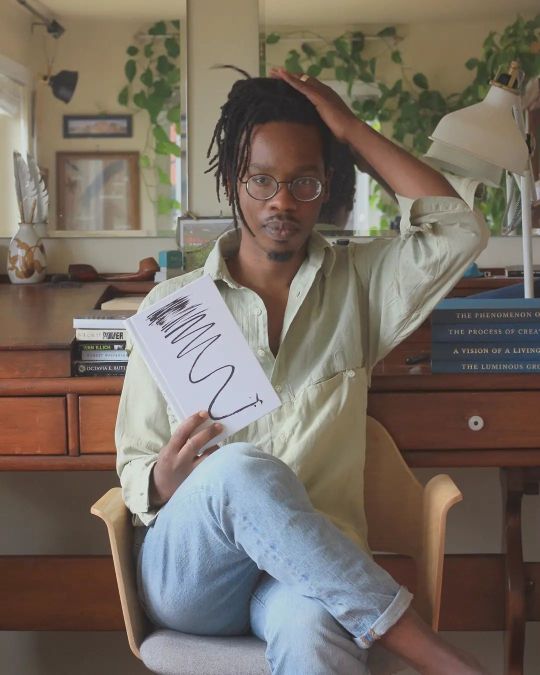
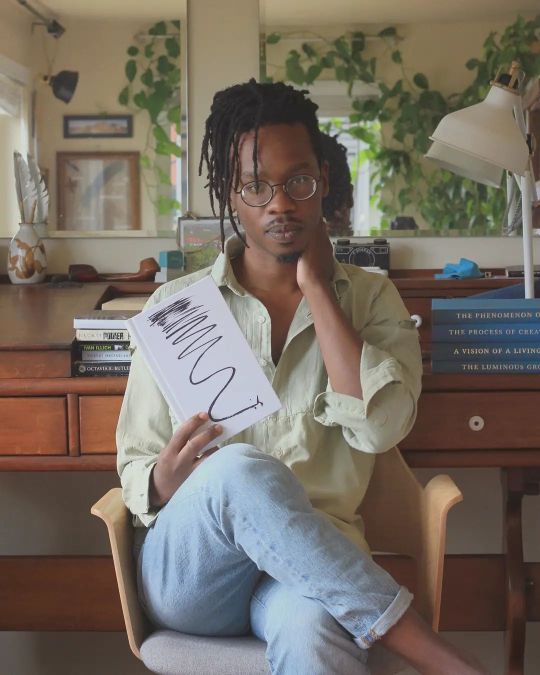
My first three books, my Triptych, asked the question, “How do I become what I am?” My fourth book, Other Related Matters, out today, asks the immediate follow up question, “How do I relate to others?” These questions are not scholarly questions and my books are not works of scholarship. The questions are philosophical and my books are documents of philosophical investigations, yes, but I do not do philosophy in and through my books in order to school others in subjects that I have a degree of mastery over.
I do philosophy in and through my books so that I might commune and correspond with others about difficult questions that we each have to ask ourselves and the answers that we find for ourselves. When I publish and share a book with the world, I say to the world, “Obscure as they may be, these are the best answers that I have come up with for this difficult question. What do you make of them?”
I am excited to publish and share Other Related Matters with the world today, my 34th birthday. I really, really do look forward to communing and corresponding with others about the book’s question and its answers. I especially look forward to finding out how others answer the book's question for themselves and to discovering the ways in which others' answers differ from and defer to my own. If and when you read the book, you are most welcome to write me and I will be sure to write you back.
You can purchase a copy of my book via my website (linked below) or via most major online booksellers (this actually saves me some work). If you cannot pay the asking price, please do get in touch and I will either gift you a copy or cut you a sensible deal.
ORDER THE BOOK
0 notes
Photo
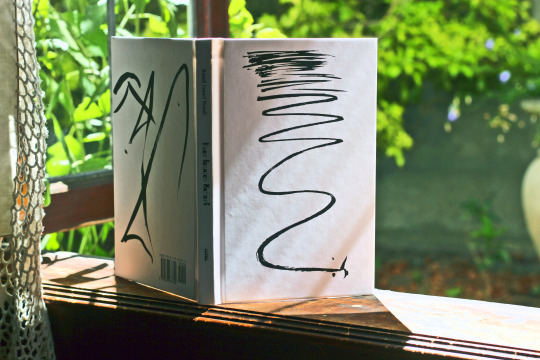
With the time and resources available to me, I have sought to make my new book, Other Related Matters, as beautiful as I could. I invented two topological animals to adorn the front and back covers of the book: a topologist's sine curve forms a serpent on the front cover and an assemblage of elementary catastrophes forms a swallow hunting an insect on the back cover.
The topologist sine curve is a figure that is everywhere connected but not everywhere path connected: mapped by conventional system of Cartesian coordinates, the curve has a point at the origin (0,0) that is connected to other points on the curve, but one cannot construct a path from elsewhere on the curve to the point at the origin, nor can one construct a path from the point at origin to any other point elsewhere on the curve.
The elementary catastrophes are algebraic forms that feature points where ordinary analysis fails and extraordinary forms of analysis are called for.
Other Related Matters is all about enigmatic points of origin and forms that are beyond ordinary analysis. Yet it is also about the human-and-animal relation. Hence my use of topological figures to construct animal figures: the serpent that slithers and the swallow that soars.
Other Related Matters will be released on August 20, 2021. Follow the link below to get yourself a copy.
ORDER THE BOOK
0 notes
Photo

Continuing where my last post left off, the text above is transcribed from an old notebook of mine, circa 2015. It connects the two approaches to philosophy that I have sought to make my own for the past decade. “One can very well think without concepts,” Gilles Deleuze notes, yet his work is defined by the creation of concepts. Jacques Derrida’s work, on the other hand, is defined by it's deconceptualizing: it would enable us to think without concepts, to elude and escape conceptual thinking when conceptual thinking can't keep our thoughts current.
To keep my own thoughts about abolition and decolonization current, my Four Essays work to deconstruct conceptual apparatuses that are burdened by the concepts of "natural order", "historical accident", "race", "streamlining", "scarcity", "deservedness", "ownership", and "conservation". I do this, for better or for worse, at the same time as I construct my own concepts. While I imagine that the concepts I have constructed may not work for you, my deconstructions might still help dissipate some stagnant pools of thought. I invite you to follow the link below to read the essays and welcome you to share your thoughts with me.
READ THE ESSAYS
1 note
·
View note
Photo
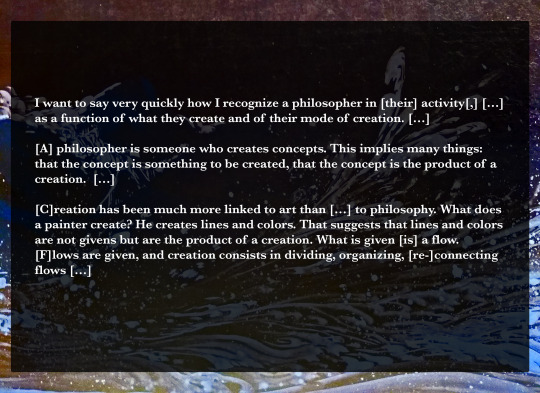
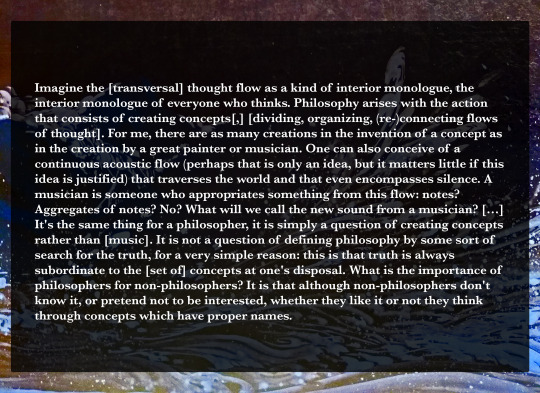
The image above features a passage interpolated from a lecture that Gilles Deleuze gave on Leibniz. This passage, which I have modified in a number of ways for my own purposes, has been a source of inspiration for me for more than a decade now. Deleuze's likening of philosophers to painters and musicians is so intuitive for me because I feel as if concepts have sounds, colors, rhythms, and shapes, and the doing and reading of philosophy is a kinesthetic experience for me.
The Four Essays that I featured in my last post are vehicles for the (re-)creation of four intra-related concepts: the concepts of "artful reparations", "leaky designs", "reparative revaluations", and "reparative rewilding". I (re-)created these four concepts in and through these essays because I felt that my own thinking in and about abolition and decolonization had ceased flowing and become stagnant. The concepts developed in my Four Essays enabled me get my own thoughts flowing again, and I have shared the essays so that others feeling blocked might make use of my concepts. I invite you to follow the link below and read the essays. If you read the essays, please do let me know if and how you can make the concepts work for you.
READ THE ESSAYS
0 notes
Photo
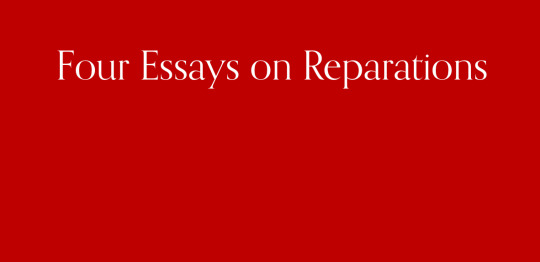

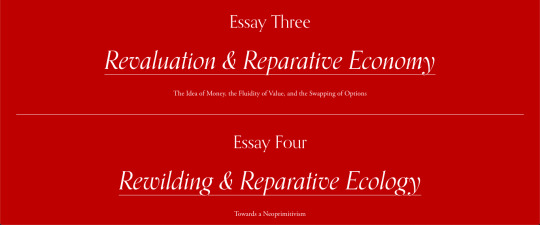

My Four Essays are companion pieces to my upcoming book, Other Related Matters. The essays were written as I was editing, designing, and proofreading the book and the essays "rework" concepts developed in the book, shifting their register from the philosophical imaginary to the political imaginary. After finishing the Four Essays, I found that the they stood alone and apart from the book, and so I decided to offer them up standing alone and standing apart. I will be sharing more about my Four Essays, my upcoming book, and their relations to each other in the days and weeks to follow. In the meantime, you may follow the link below to read the essays. If you find them thought provoking, please do share them with others.
READ THE ESSAYS
5 notes
·
View notes
Photo
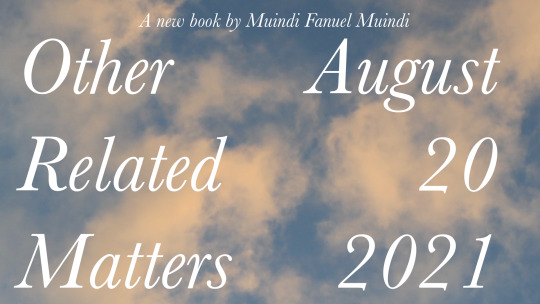
I recently finished the manuscript for a new book, a diptych, titled Other Related Matters. I've just begun sharing the different halves of the diptych with different readers for comments, and I've also just begun working on the design and layout of the book. The two texts that constitute the book were written in response to two directed reading groups that I organized this past year with some friends: the "(anti)Social (anti)Bodies" and the "Virulent(ly) Self(ish)". You can check out the proceedings the two directed reading groups at solutionsforpostmodernliving.org. While these proceedings are somewhat suggestive of what you will find in Other Related Matters, the book is its own monster, a radical literary departure that imagines far more than it investigates.
0 notes
Photo
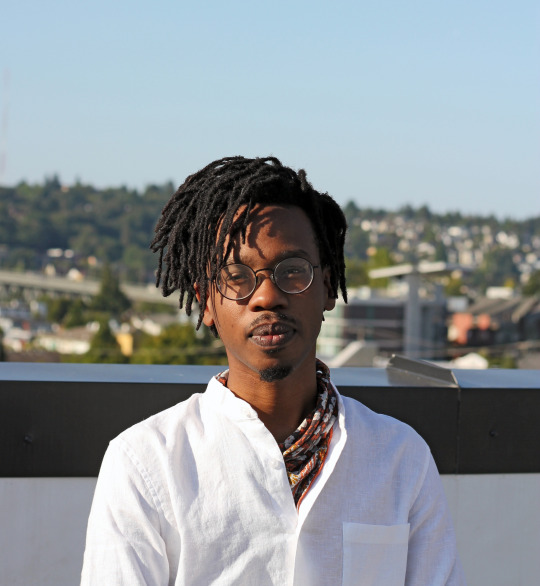
WHAT'S NEW
September 20, 2020
With the COVID-19 pandemic likely to put my live, in-person performative work on hold for quite sometime, I shall be experimenting with film and with telematic performance techniques over the course of the next year. In preparation for these upcoming experiments, I've taken the time to refresh my website, and I invite you to check out my new home page at solutionsforpostmodernliving.org.
The new website design also makes it possible for you to purchase a rather fine hardcover edition of my most recent book, Triptych, directly from me. So, if you would like to purchase a copy, I highly reccommend doing so by navigating to the "Books" page.
0 notes
Photo
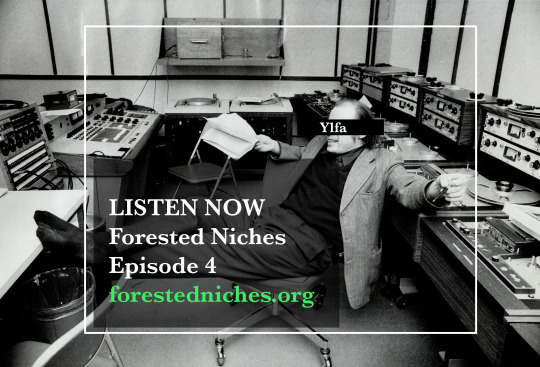
The fourth episode of the Forested Niches podcast is out now! This week I've cast Ylfa as Glenn Gould in the promo. Gould's genius radio documentary The Idea of the North, and the rest of his Solitude Trilogy, were an inspiration for me as I co-produced and engineered this project but, of course, Ylfa is the true genius, inspiration, and prime mover behind this project. Like Gould's radio doc, the fourth episode of Forested Niches is composed of intertwined interviews, but time didn't allow for us to attempt the contrapuntal editing technique that Gould originated on this one. Note, however, that we did attempt some contrapuntal editing during the tree encounter in episode two. Take a listen and stay tuned for more! There will be longer intervals between episodes and things are going to get more marvelous and strange from here on out.
#forest ecology#forest therapy#Shinrin-yoku#ecopsychology#philosophy#glenn gould#the idea of the north#solitude trilogy
0 notes
Photo
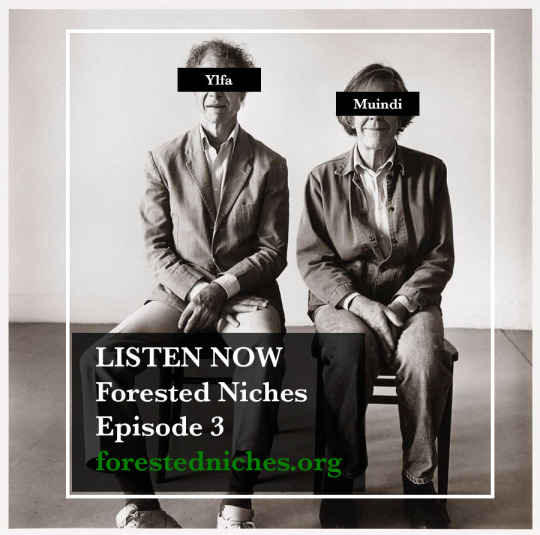
Check out the third episode of the Forested Niches podcast. In this episode, Ylfa dances through a series delightful and strange informative anecdotes about mycorrhizal fungi, and I chance upon a few mycorrhizal riffs on the guitar. Definitely my favorite of the three episodes we've released thus far. You ask, "Why have I cast myself as John Cage and Ylfa as Merce Cunningham in the image above?" Well, have I mentioned that every episode is assembled from several improvised takes? So many of the lovely anecdotes and images that wind up in each episode are digressions chanced upon by Ylfa's well studied and oh so nimble mind.
#podcast#forest therapy#forest ecology#philosophy#Shinrin-yoku#ecopsychology#john cage#Merce Cunningham
0 notes
Photo



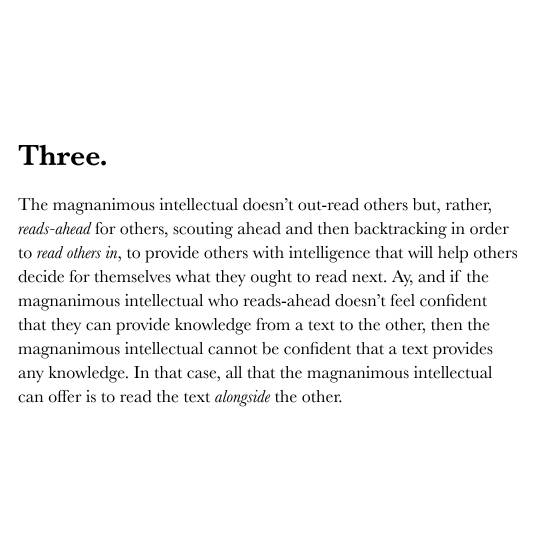

A friend asked me why I organize reading groups, like the (anti-)Social (anti-)Bodies group, that invite others to participate whether or not they have the time to read any of the assigned texts. I told this friend that the reading groups that I organize aren’t “out-reading” groups but, rather, “reading-in” groups. I wrote the four theses above in order to develop upon this distinction. Having written them, it strikes me quite clearly that the reason why I am not an academic is because the process of becoming an academic is a process that privileges practices of out-reading over and against practices of reading-in. In this day and age, in a time in which a radically and rigorously intellectual life is an economically precarious life, those who radically and rigorously out-read tend to be those who secure the best academic positions and hold themselves up as the exemplars of the intellectual life, while those intellectuals who radically and rigorously read-in tend to live rather precariously and without esteem. Ay, but when has that not been the case? And once more, I find myself considering the life an work of Spinoza. I imagine that Spinoza would say that the miserly academic wields their knowledge like a despot or priest, so as to make others sad: sad for not having already learned more and sad for still having more to learn before they will “catch up”. This, when it could and should be a joy to learn.
It seemed fitting to have Cy Twombly’s “School of Athens” accompany my theses, given my accounts of texts that I read are kin to Twombly’s account of Raphael’s masterpiece.
#intellectualism#generosity#philosophy#reading#academia#para-academia#Cy Twombly#school of athens#raphael
2 notes
·
View notes
Photo

The second episode of the Forested Niches podcast is full of facts and informative anecdotes about trees. Ylfa geeked out on this one, so I've cast her as David Byrne instead of Bowie this time aroud. I'm still playing the Brian Eno supporting her charismatic lead. We've put a few found sounds from nature in this episode for you, but we really want you to listen to this episode outside and to find sounds for yourselves. Wherever you listen, please care for the safety of yourselves and others. Next week, Ylfa and I will be trying to figure out how to make mycorrhizae sonorous. If you have any sound suggestions or contributions to help us pull this off, do get in contact with me before this Friday and let me hear what you've got!
0 notes
Photo
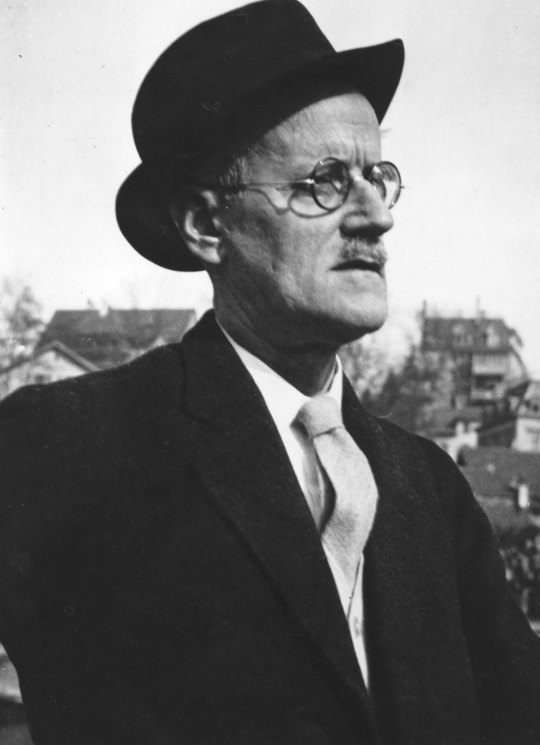
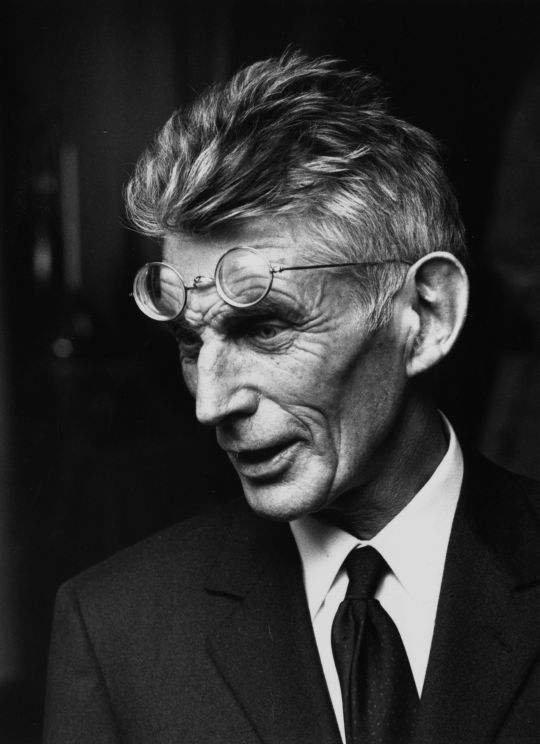
READ // KILL YOUR IDOLS
The text linked above sketches out the memetic theory of learning that is critical to my philosophical project. The inklings of this theory can be found in a study of the work of James Joyce and Samuel Beckett that I abandoned more than a decade ago but that has not yet abandoned me. I am thankful for the interlocutors and correspondents who've inspired me to sketch this theory anew, and I am looking forward to getting their feedback on it.
1 note
·
View note
Photo

The first episode of Ylfa Lund Muindi's podcast is here. Ylfa is working a series of audio programs that will guide listeners through a series of synesthetic exercises and natural encounters.
I co-produced and engineered the first episodes. I enjoyed playing Brian Eno to her David Bowie on this one, and Nature was kind enough to play Robert Fripp to us both. Roosevelt Elk bugling and clashing antlers, Crows cackling, Pacific Wrens chirping and dancing, light breezes and heavy gusts of wind, moss dripping, and all the noisy sounds of silence: Nature's riffs are sublime.
Please find yourself a comfortable place in which you can fully immerse yourself in the environment before you tune in. This audio is not meant to be listened to while driving, running, or otherwise distracted.
Find out more at forestedniches.org.
0 notes
Photo

Notes Towards a Concept of "Im-media"
Two Informative Anecdotes
Following up on my last post, I would like to begin to develop the term “im-media” a bit further by regarding two different “im-media” as primary informative anecdotes.
My first informative anecdote of an “im-medium” was a simple one: the “portal”. Again, what we conventionally call a “portal” (e.g., an archway or a doorway) does not mediate between two different spaces, rather, it articulates a space that immediately relates two different spaces. By contrast, a “barrier” mediates between two spaces or, in other words, a “barrier” closes off an immediate relation between two spaces. From this informative anecdote, I want you to recognize that im-media are “portals of entry, exit, and communication”, and I want you to recognize that media are “barriers to entry, exit, and communication”. Also, I want you to recognize that the difference between the two spaces that are immediately related to one another need not actually precede the construction of the portal that articulates their immediate relation. For instance, I can create two different spaces in a single open field by constructing an archway portal in the middle of such a field. In this way, the different spaces on either side of the archway only existed virtually prior to the creation of the archway: the creation of the archway is what made the different spaces actually exist.
My second informative anecdote of an “im-medium” is the "germ" (i.e., the “cutting”, the “rhizome”, the “seed”, or the “spore”) that facilitates plant propagation. I want to argue that germs articulate bio-geographies that immediately relate different bio-geographies. Let’s say that I take a seed from a plant that grows here in the temperate rainforests of the Pacific Northwest Coast of North America, on the Olympic Peninsula, and that I transport this seed to the temperate rainforests of Japan, to northern Honshu. Ay, and let’s say that I plant this seed on northern Honshu. Now, no matter whether this seed from the Olympic Peninsula takes root or fails to take root on northern Honshu, this seed articulates a biogeography that immediately relates the biogeography of northern Honshu to that of the Olympic Peninsula: if the seed takes root, this immediate relation conveys a biogeographical similarity; if the seed fails to take root, this immediate relation conveys a bio-geographical difference. Now, going further, if the seed fails to take root and I intervene in the ecology of northern Honshu, making the biogeography of northern Honshu more similar to the biogeography of the Olympic Peninsula and enabling such a seed to take root in future, this homogenizing intervention in the ecology of northern Honshu mediates between the biogeography of northern Honshu and that of the Olympic Peninsula. Alternatively, if the seed succeeds in taking root and I intervene in the ecology of northern Honshu, making the biogeography of northern Honshu less similar to the biogeography of the Olympic Peninsula and preventing such a seed from taking root in future, this diversifying intervention in the ecology of northern Honshu mediates between the biogeography of northern Honshu and that of the Olympic Peninsula.From this informative anecdote, I want you to recognize that im-mediations are disseminations of germs that convey similarities and differences amongst different grounds, and I want you to recognize that mediations are interventions that make different grounds more or less similar to one another. Again, however, I also want you to recognize that similarities and differences amongst different grounds are actual only in relation to im-mediations: the biogeographical similarities and differences conveyed by the dissemination of the seed from the Olympic Peninsula to northern Honshu were virtual until they were actualized by the dissemination of the seed from the Olympic Peninsula to northern Honshu.
Now, to return to my Nine Theses, I hold that a power mediates relations by erecting barriers between factions and staging interventions amongst factions: erecting barriers and staging interventions are practices that enable "authorities" who would spectacularize, routinize, and normalize differences so as to make different factions either more or less similar to one another. Furthermore, I hold that a counterpower im-mediates relations by opening portals between factions and disseminating germs amongst factions: opening portals and disseminating germs are practices that enable "dissenters" who commute from faction to faction so as to convey similarities and differences amongst different factions.
#portals#propagators#DISSEMINATION#philosophy#race#racism#power#Jean-Michel Basquiat#painted television#Alexis Adler#im-media#nine theses
0 notes
Photo

From a short note to research collaborators
The Nine Theses on Power that I posted here yesterday proposed that ruling powers are constituted by "ritualized spectacles", disciplinary powers constituted by "routine examinations", and normalizing powers constitued by "biased measurement practices". One could consider the note below a tenth thesis, proposing that "counter-powers" are constituted by the creation and traversal of "portals", as described in the note. Indeed, but this thesis couldn't carry the same force as the first nine, in my opinion, because one cannot make any practical sense, never mind political sense, of this tenth thesis without a dramatic expression of it. And so, there you have it, a new and more exacting framing of my long runing project: to uncover, relate, create, discover, and document dramatic expressions of this tenth thesis...
I composed my Nine Theses on Power in response to several conversations with friends and loved ones about racism. While the Nine Theses are framed as a response to current events, I believe that they are of broader interest to all of us engaged in “prototyping social forms”. One could say that the Nine Theses turn on the distinction between “mediated” social forms and “immediate” social forms, associating power with the former and counterpower with the latter. Indeed, implicit in these Nine Theses is the proposition that to “fight power” is to obviate “media” in favor of “im-media”.
“Im-media” is a rather strange term that needs to be developed or abandoned: not least because it seems dismissive of anything that calls itself media and anything that others call media. I tried to conceive of something like “im-media” in the “post-script” to The Gift and the Ledger, wherein I referred to “im-media” as “openings to natural environments”. More recently, inspired by phrasings that Garret Laroy Johnson and Sha Xin Wei have been developing and deploying in conversations that I’ve had with them, I have become interested in conceiving of im-media as “portals”. What we conventionally call a “portal” (e.g., an archway or a doorway) does not mediate between two different spaces, rather, it articulates a space that immediately relates two different spaces.
As you encounter the term “immediate relations” in my Nine Theses, I would like you all to consider the following question, “What portals might we develop and deploy in order to articulate such immediate relations?“
0 notes
Photo
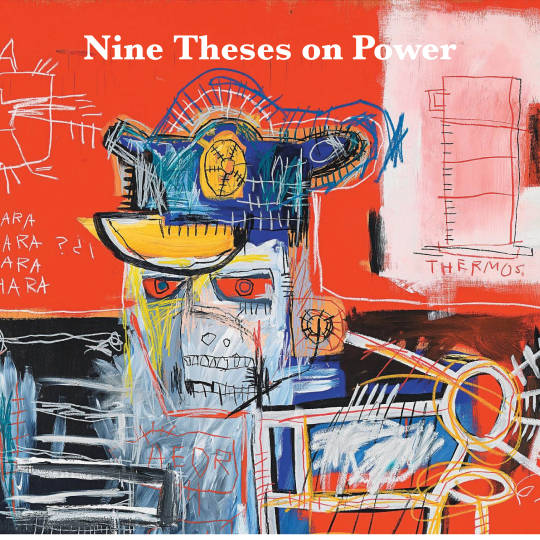
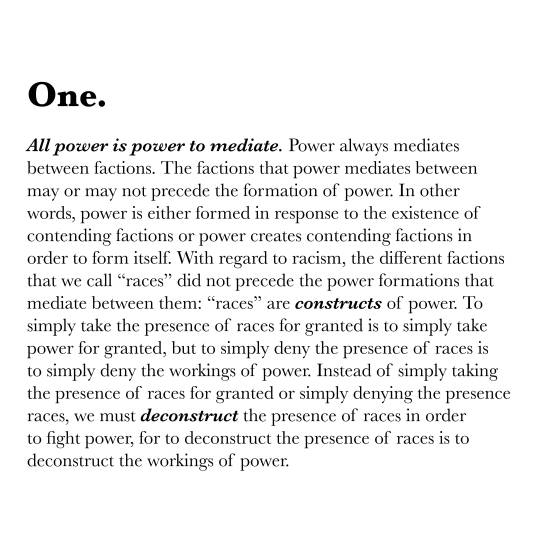
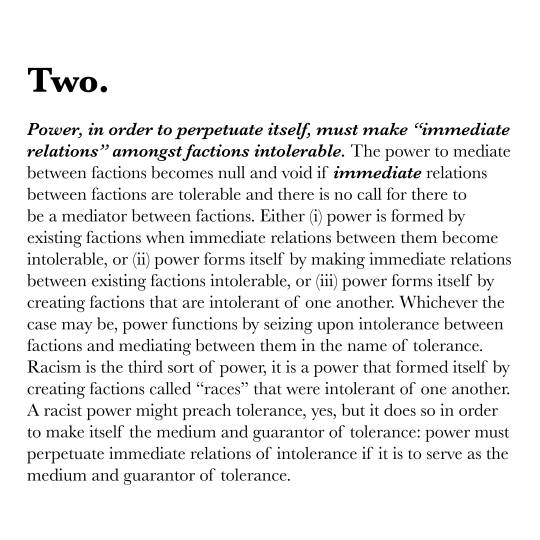
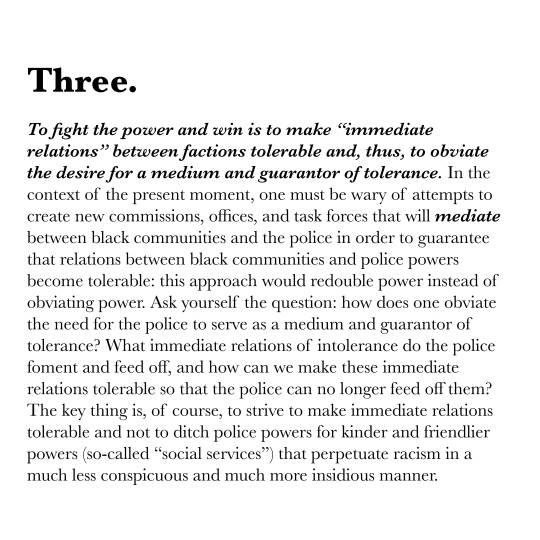
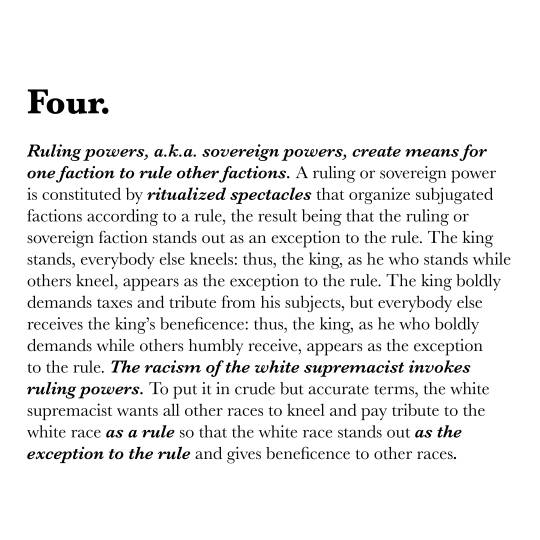


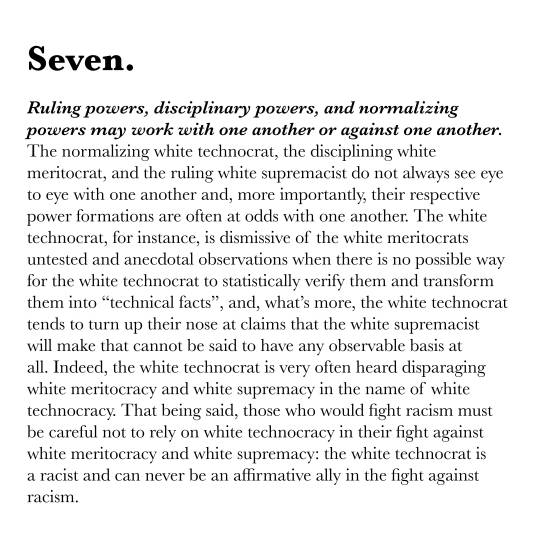

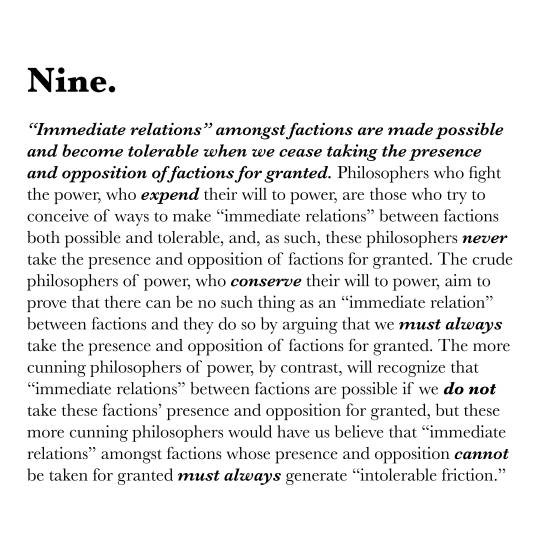
Nine Theses on Power
One. All power is power to mediate. Power always mediates between factions. The factions that power mediates between may or may not precede the formation of power. In other words, power is either formed in response to the existence of contending factions or power creates contending factions in order to form itself. With regard to racism, the different factions that we call “races” did not precede the power formations that mediate between them: “races” are constructs of power. To simply take the presence of races for granted is to simply take power for granted, but to simply deny the presence of races is to simply deny the workings of power. Instead of simply taking the presence of races for granted or simply denying the presence races, we must deconstruct the presence of races if we are to fight the power, for to deconstruct the presence of races is to deconstruct the workings of power.
Two. Power, in order to perpetuate itself, must make “immediate relations" amongst factions intolerable. The power to mediate between factions becomes null and void if immediate relations between factions are tolerable and there is no call for there to be a mediator between factions. Either (i) power is formed by existing factions when immediate relations between them become intolerable, or (ii) power forms itself by making immediate relations between existing factions intolerable, or (iii) power forms itself by creating factions that are intolerant of one another. Whichever the case may be, power functions by seizing upon intolerance between factions and mediating between them in the name of tolerance. Racism is the third sort of power, it is a power that formed itself by creating factions called “races” that were intolerant of one another. A racist power might preach tolerance, yes, but it does so in order to make itself the medium and guarantor of tolerance: power must perpetuate immediate relations of intolerance if it is to serve as the medium and guarantor of tolerance.
Three. To fight the power and win is to make “immediate relations" between factions tolerable and, thus, to obviate the desire for a medium and guarantor of tolerance. In the context of the present moment, one must be wary of attempts to create new commissions, offices, and task forces that will mediate between black communities and the police in order to guarantee that relations between black communities and police powers become tolerable: this approach would redouble power instead of obviating power. Ask yourself the question: how does one obviate the need for the police to serve as a medium and guarantor of tolerance? What immediate relations of intolerance do the police foment and feed off, and how can we make these immediate relations tolerable so that the police can no longer feed off them? The key thing is, of course, to strive to make immediate relations tolerable and not to ditch police powers for kinder and friendlier powers (so-called “social services”) that perpetuate racism in order to act as mediums and guarantors of tolerance in a much less conspicuous and much more insidious manner.
Four. Ruling powers, a.k.a. sovereign powers, create means for one faction to rule other factions. A ruling or sovereign power is constituted by ritualized spectacles that organize subjugated factions according to a rule, the result being that the ruling or sovereign faction stands out as an exception to the rule. The king stands, everybody else kneels: thus, the king, as he who stands while others kneel, appears as the exception to the rule. The king boldly demands taxes and tribute from his subjects, but everybody else receives the king’s beneficence: thus, the king, as he who boldly demands while others humbly receive, appears as the exception to the rule. The racism of the white supremacist invokes ruling powers. To put it in crude but accurate terms, the white supremacist wants all other races to kneel and pay tribute to the white race as a rule so that the white race as the exception to the rule stands out and gives beneficence to other races.
Five. Disciplinary powers create means for one faction to determine the norms that other factions are supposed to conform to. A faction wielding disciplinary power seeks to determine what is typical and atypical about each and every faction, including its own faction. Disciplinary powers are constituted by routine examinations that organize the atypical individuals of each faction according to the manner and extent of their deviations from the typical individuals of each faction. The racism of the white meritocrat invokes disciplinary powers. The white meritocrat will make the untested anecdotal observation that the typical black man has athletic ability but no mind for mathematics. As such, the white meritocrat, seeking to develop and exploit the “natural” talents of the typical black man, will routinely send talent scouts and coaches to predominantly black high schools in order to examine for, discover, and develop those “natural” athletic talents typically found in young black men. This same white meritocrat wouldn’t bother sending talent scouts and coaches to examine for, discover, and develop talents for mathematics that are considered “unnatural” amongst black men: it is assumed that, because mathematical talents are not typically found in black men, examining for mathematical talents in predominantly black schools is a waste of resources. The white meritocrat finds that it is prudent to examine black students for the bare minimum of mathematical skill that is needed to “get by” in the modern workplace and then to leave it up to the discretion of individual parents and teachers to bring black men with “unnatural” mathematical talents to the attention of the right people.
Six. Normalizing powers create means for one faction to receive more chances in and through making other factions receive less chances. Normalizing powers are constituted by biased measurement practices that introduce systematic errors, thereby biasing statistics so as to favor the privileged faction. The racism of the white technocrat invokes normalizing powers. The white technocrat substantiates the untested and anecdotal observations of the white meritocrat by designing and implementing biased measurement practices that statistically verify the white meritocrat’s untested and anecdotal observations. Put more radically, the work of the white technocrat either ignores or installs environmental factors that interfere with measurement processes in ways that statistically verify the white meritocrat’s untested and anecdotal observations. Thanks to the white technocrats ignorance of and/or installation of environmental factors that bias measurment processes in favor of white schools, it becomes a technical fact that predominantly black schools have a greater chance of producing successful athletes and a lesser chance of producing successful mathematicians relative to predominantly white schools.
Seven. Ruling powers, disciplinary powers, and normalizing powers may work with one another or against one another. The normalizing white technocrat, the disciplining white meritocrat, and the ruling white supremacist do not always see eye to eye with one another and, more importantly, their respective power formations are often at odds with one another. The white technocrat, for instance, is dismissive of the white meritocrats untested and anecdotal observations when there is no possible way for the white technocrat to statistically verify them and transform them into “technical facts”, and, what’s more, the white technocrat tends to turn up their nose at claims that the white supremacist will make that cannot be said to have any observable basis at all. Indeed, the white technocrat is very often heard disparaging white meritocracy and white supremacy in the name of white technocracy. That being said, those who would fight racism must be careful not to rely on white technocracy in their fight against white meritocracy and white supremacy: the white technocrat is a racist and can never be an affirmative ally in the fight against racism.
Eight. Fighting the power is one thing, fighting those who would wield power is another thing. The fight against racism is not a fight against individual racists: it is one thing to fight against individual white supremacists, individual white meritocrats, and individual white technocrats, but it is another thing to fight against ritualized spectacles that enable white supremacy, against routine examinations that enable white meritocracy, and against biased measurement practices that enable white technocracy. Naming, shaming, and maiming individual racists, however satisfying that may be, doesn’t necessarily contribute in any direct or indirect way to the fight against racism. Fighting racism is about sabotaging the means that enable racists.
Nine. “Immediate relations” amongst factions are made possible and become tolerable when we cease taking the presence and opposition of factions for granted. Philosophers who fight the power, who would expend their will to power, are those who try to conceive of ways to make “immediate relations” between factions both possible and tolerable, and, as such, these philosophers never take the presence and opposition of factions for granted. The crude philosophers of power, who would conserve their will to power, aim to prove that there can be no such thing as an “immediate relation” between factions and they do so by arguing that we must take the presence and opposition of factions for granted. The more cunning philosophers of power, by contrast, will recognize that “immediate relations” between factions are possible if we do not take these factions’ presence and opposition for granted, but these more cunning philosophers would have us believe that “immediate relations” amongst factions whose presence and opposition cannot be taken for granted are destined to generate “intolerable frictions”.
#race#racism#Michel Foucault#george floyd#blackness#power#philosophy#Jean-Michel Basquiat#la hara#nine theses
6 notes
·
View notes